6-Benzylaminopurine
Synonym(s):6-BAP;6-Benzylaminopurine - CAS 1214-39-7 - Calbiochem;BA;Benzyladenine;N6-Benzyladenine
- CAS NO.:1214-39-7
- Empirical Formula: C12H11N5
- Molecular Weight: 225.25
- MDL number: MFCD00005572
- EINECS: 214-927-5
- SAFETY DATA SHEET (SDS)
- Update Date: 2025-12-23 21:30:31

What is 6-Benzylaminopurine?
Description
6-Benzyladenine, also called 6-benzylaminopurine, is a synthetic cytokinin that stimulates cell division in plants. Among other actions, it spurs plant growth, sets blossoms, and improves fruit quality.
Cytokinins are in the plant growth hormone family. As part of his pioneering research in plant growth regulators, plant physiologist Folke K. Skoog at the University of Wisconsin–Madison synthesized 6-benzyladenine and demonstrated its efficacy.
In a recent C&EN “Periodic Graphics” page, author Andy Brunning included 6-benzyladenine in a roundup of how “flower food” helps to?preserve cut flowers. He notes that the growth regulator’s contribution to preservation is maintaining petal colors. 6-Benzyladenine is similarly used to extend the shelf lives of broccoli florets and shredded cabbage to make them more attractive to customers.
Chemical properties
Colorless to off-white or yellow powder. Corrosive. Insoluble in water, slightly soluble in ethanol, stable in acid and alkali.
The Uses of 6-Benzylaminopurine
6-Benzylaminopurine is a plant growth regulator that belongs to the class of first generation synthetic cytokinin used in agriculture.
6-Benzylaminopurine has been used:
to induce sprouting in plant materials.
in seed germination medium for culturing of seeds.
to modify Murashige and Skoog (MS) media for shoot initiation.
inhibitor of respiratory kinase in plants.
6-Benzylaminopurine, benzyl adenine (BAP) is a synthetic cytokinin which together with auxins elicits plant growth and development responses. BAP is a widely use cytokinin supplement to plant growth media such as Murashige and Skoog medium, Gamborg’s medium, and Chu’s N6 medium.
What are the applications of Application
6-Benzylaminopurine is a purine reported to induce positive inotropic effects through activation of P2-purinergic receptors
Definition
ChEBI: 6-Benzylaminopurine is a member of the class of 6-aminopurines that is adenine in which one of the hydrogens of the amino group is replaced by a benzyl group. It has a role as a plant metabolite and a cytokinin. It derives from an adenine.
What are the applications of Application
6-Benzylaminopurine solution has been used as a component in the Murashige & Skoog medium (MS) for culturing mandarin explants and plantlets of Dendrocalamus asper (Schultes f.). It has also been used as a supplement in Nitsch and Nitsch medium (NN) of grapevine explants.
Preparation
synthesis of 6-benzylaminopurine: To 5g hypoxanthine, add 20mL SOCl2, 0.25g DMAP, 10gBTC dissolved in 20mL SOCl2. Heat and add BTC/SOCl2 dropwise. Reflux (refrigerant cooling) to complete dissolution, steam out SOCl2 (containing phosgene, which is used for recovery), evaporated (drained), cooled to room temperature to obtain a milky yellow solid (6-chloropurine and DMAP.Hcl). Directly add 4g benzylamine and 25g triethylamine to it, heat to 70~80 ℃, or microwave heating, until the 6-chloropurine reaction is complete (TLC monitoring), add ethanol, the solid filtered out is washed with ethanol, and dried to obtain 7 g of product 6-benzylaminopurine with a brown color.
Preparation and biological activity of 6-benzylaminopurine derivatives in plants and human cancer cells
General Description
6-Benzylaminopurine is a plant growth regulator that belongs to the class of first generation synthetic cytokinin used in agriculture commodities.
Health Hazard
6-benzylaminopurine (6-BA) is widely used in agriculture and horticulture as plant growth regulator. Its excessive use may pose a potential risk to both environment and human health, which is causing great concern. Vapor is irritating when breathed at high concentrations. Contact with liquid causes irritation of skin and burning of eyes; Vapors cause a slight smarting of the eyes or respiratory system if present in high concentrations; If spilled on clothing and allowed to remain, may cause smarting and reddening of the skin.
Agricultural Uses
6-Benzylaminopurine is a plant growth promoter, is the first applied synthetic cytokinin, mainlyused as a broad- spectrum plant growth regulator. It can be used inagriculture, horticulture, for plants at different stages, from germination to harvest. It enhance the shape of apples and to increase the fruit set in pears. It increases the yield of pistachios and tomatoes. Not listed for use in EU countries. Registered for use in the U.S.
Trade name
ABG® 3034; ACCEL®; AGTROL®; 6-BA®; BA® (growth stimulant); CHRYSAL BVB®; EXILIS®; PERLAN®; PROMALIN®; SD® 4901; SQ® 4609
Safety Profile
Moderately toxic by ingestion andskin contact. Human mutation data reported. Whenheated to decomposition it emits toxic vapors of NOx.
Potential Exposure
A polyamine plant growth regulator used to lengthen and enhance the shape of apples and to increase the fruit set in pears. It increases the yield of pistachios and tomatoes. Not listed for use in the EU countries.
Shipping
UN3259 Amines, solid, corrosive, n.o.s, or Polyamines, solid, corrosive, n.o.s., Hazard class: 8; Labels: 8—Corrosive material, Technical Name Required.
Purification Methods
It is purified by recrystallisation from aqueous EtOH. It has at 207 and 270nm (H2O), 268 nm max (pH 6), 274nm (0.1 N HCl) and 275nm (0.1 N NaOH). [Daly J Org Chem 21 1553 1956, Bullock et al. J Am Chem Soc 78 3693 1956, Beilstein 26 III/IV 3575.]
Incompatibilities
May react with strong oxidizers such as chlorates, peroxides, nitrates, etc. May release heat on contact with water. Solid and corrosive amines are chemical bases. Neutralize acids to form salts plus water in exothermic reactions. May be incompatible with isocyanates, halogenated organics, peroxides, phenols (acidic), epoxides, anhydrides, and acid halides. May generate flammable gaseous hydrogen in combination with strong reducing agents, such as hydrides.
Waste Disposal
Dissolve or mix the material with a combustible solvent and burn in a chemical incinerator equipped with an afterburner and scrubber. All federal, state, and local environmental regulations must be observed.
Properties of 6-Benzylaminopurine
| Melting point: | 230-233 °C |
| Boiling point: | 145 °C(lit.) |
| Density | 0.899 g/mL at 20 °C |
| vapor density | >1 (vs air) |
| vapor pressure | 3.3 mm Hg ( 20 °C) |
| refractive index | n |
| Flash point: | 103 °F |
| storage temp. | 2-8°C |
| solubility | H2O: soluble |
| form | Liquid |
| pka | 9.36±0.20(Predicted) |
| color | White to very faint yellow |
| Odor | Characteristic acrylic. |
| Water Solubility | Soluble in water, methanol and acetone. Slightly soluble in ethyl acetate and dichloromethane and toluene. Insoluble in n-hexane. |
| BRN | 19406 |
| Stability: | Stable. Incompatible with strong oxidizing agents. |
| CAS DataBase Reference | 1214-39-7(CAS DataBase Reference) |
| NIST Chemistry Reference | 1H-purin-6-amine, n-(phenylmethyl)-(1214-39-7) |
| EPA Substance Registry System | N-Benzyladenine (1214-39-7) |
Safety information for 6-Benzylaminopurine
| Signal word | Warning |
| Pictogram(s) |
 Exclamation Mark Irritant GHS07  Health Hazard GHS08  Environment GHS09 |
| GHS Hazard Statements |
H302:Acute toxicity,oral H410:Hazardous to the aquatic environment, long-term hazard |
| Precautionary Statement Codes |
P202:Do not handle until all safety precautions have been read and understood. P264:Wash hands thoroughly after handling. P264:Wash skin thouroughly after handling. P270:Do not eat, drink or smoke when using this product. P273:Avoid release to the environment. P301+P312:IF SWALLOWED: call a POISON CENTER or doctor/physician IF you feel unwell. P308+P313:IF exposed or concerned: Get medical advice/attention. |
Computed Descriptors for 6-Benzylaminopurine
| InChIKey | NWBJYWHLCVSVIJ-UHFFFAOYSA-N |
6-Benzylaminopurine manufacturer
JSK Chemicals
ALR Agro Chemicals
New Products
Indole Methyl Resin tert-butyl 9-methoxy-3-azaspiro[5.5]undecane-3-carboxylate Boc-His(Boc)-OH 2-CTC Resin 4-Chloro-7-tosy1-7Hpyrrolo[2,3-d]pyrimidine 5,7-Dibromo-1H-indole 2,5-dichloro-N-hydroxy-4,6-dimethylpyridine-3-carboximidamide 2,2-Dimethoxy-7-azaspiro[3.5]nonane hydrochloride 4-chloromethyl-5-methyl-1,3-dioxol-2-one (DMDO-Cl) R-2-BENZYLOXY PROPIONIC ACID 1,1’-CARBONYLDIIMIDAZOLE 1,1’-CARBONYLDI (1,2-4 TRIAZOLE) N-METHYL INDAZOLE-3-CARBOXYLIC ACID 4-((2-hydroxyethyl)thio)benzoic acid 1-(TERT-BUTOXYCARBONYL)-2-PYRROLIDINONE Methyl 6-methylnicotinate 3-Pyridineacrylic acid tert-Butyl carbazate TETRAHYDRO-2H-PYRAN-3-OL 2-((4-morpholinophenylamino) (methylthio) methylene) malononitrile 3-(4-morpholinophenylamino)-5-amino-1H-pyrazole-4-carbonitrile 2,4-dihydroxybenzaldehyde 1,3-Diethyl-1,3-Diphenylurea Methyl 2-methylquinoline-6-carboxylateRelated products of tetrahydrofuran
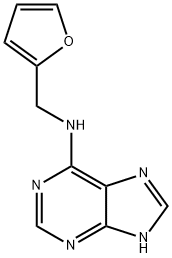

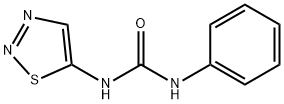



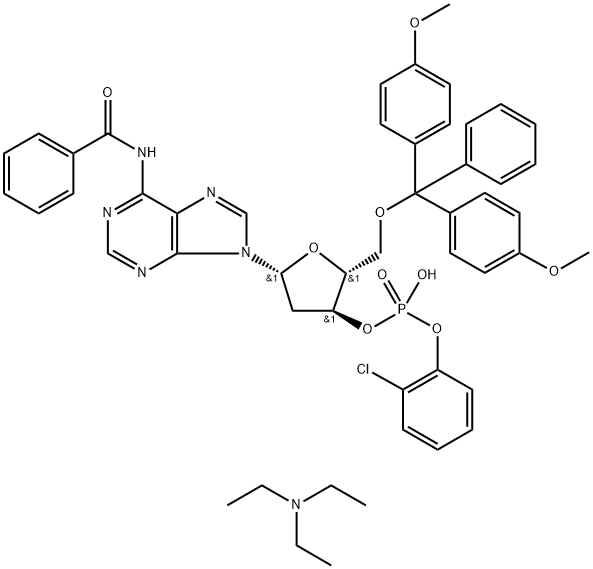

You may like
-
 6-BENZYL AMINO PURINE (6-BA) 99%View Details
6-BENZYL AMINO PURINE (6-BA) 99%View Details -
 6-Benzyl Adenine (6-BA) SQ CAS 1214-39-7View Details
6-Benzyl Adenine (6-BA) SQ CAS 1214-39-7View Details
1214-39-7 -
 Powder 6 Benzylaminopurine (6-BA)View Details
Powder 6 Benzylaminopurine (6-BA)View Details
1214-39-7 -
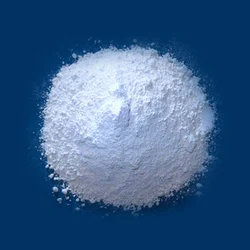 Powder 6 Benzyl Amino Purine (6BA), BottleView Details
Powder 6 Benzyl Amino Purine (6BA), BottleView Details
1214-39-7 -
 White 6 BA Injection Plant Growth Promoters, VegetablesView Details
White 6 BA Injection Plant Growth Promoters, VegetablesView Details
1214-39-7 -
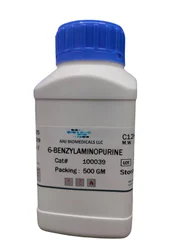 500gm 6 Benzylaminopurine Powder, BottleView Details
500gm 6 Benzylaminopurine Powder, BottleView Details
1214-39-7 -
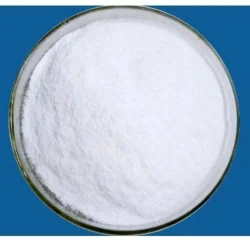 Powder 6 Benzylaminopurine 6 Ba Pure Grade, Bag, Packaging Size: 100 gmView Details
Powder 6 Benzylaminopurine 6 Ba Pure Grade, Bag, Packaging Size: 100 gmView Details
1214-39-7 -
 Benzylaminopurine Fertilizer 6baView Details
Benzylaminopurine Fertilizer 6baView Details
1214-39-7
